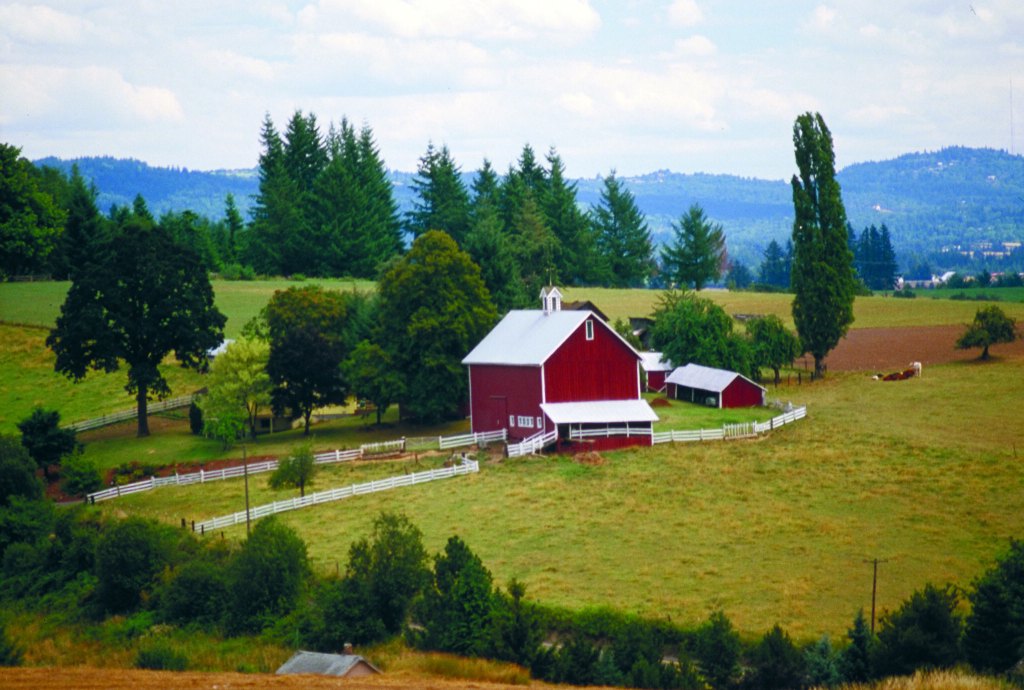What, and where, is rural Oregon?
Published 11:36 am Friday, September 28, 2018

- A photo of a red barn probably depicts a simplistic view of rural Oregon.
If you think metropolitan Oregon is diverse, consider rural Oregon.
“I would argue Portland and Eugene are more similar to each other than Astoria is to Baker City,” says Eric Schuck, an agricultural economist at Linfield College in McMinnville.
Those differences make it difficult even to define rural Oregon.
“What is Bend these days? Bend proper, is it urban? Is it rural? Or is it something different and new?” says Kevin Curry, an adjunct professor at Linfield and former Republican staffer in the Legislature.
Curry also cites Oregon House District 26, currently held by Rep. Rich Vial, R-Scholls: “This seat includes both Wilsonville and Sherwood, as well as a tiny bit of Hillsboro, but also a major swath of unincorporated, and traditionally rural/agricultural, Washington County. Is this rural or urban? Rep. Vial has to represent both interests.
“Since the goal of an elected official is to represent their district, and in doing so get re-elected, their voting interests in the Legislature should be to maximize support in their district. Obviously, this becomes more difficult for ‘mixed’ districts like Rep. Vial’s seat.”
Some Democratic legislators face similar challenges.
“There are Democrats representing a lot of rural Oregonians. They, too, struggle to speak up for people in their district,” says House Speaker Tina Kotek, D-Portland.
In any case, there are few truly rural legislators left. Political scientist Jim Moore of Pacific University notes that most lawmakers representing rural Oregon live in cities.
“It’s tricky because so many [legislators] from Southern Oregon and Eastern Oregon aren’t rural,” he says. “They’re from Bend, they’re from Klamath Falls, they’re from Medford, so they’re suburban.”
And those rural towns are turning into rural Portlands, according to Sen. Brian Boquist.
“The dynamics have changed. You can’t say ‘rural Oregon’ anymore. The food you can get in downtown Portland in the Pearl District you can get in downtown Enterprise,” he says. “What happens in Portland can happen 10 minutes later in Enterprise, if not 5 minutes.”
One dividing line for rural Oregon might be the absence of high-speed internet. That lack of access includes Boquist’s home – a farm in Polk County.
The difficulty of defining “rural” also extends to charitable and educational institutions.
For example, when awarding grants, The Ford Family Foundation considers 26 of Oregon’s 36 counties as exclu-sively rural. Yet the definition became more challenging when the foundation teamed up with the Oregon State University Extension Service to produce “Oregon by the Numbers,” a statistical look at the state and its counties.
“At the county level and the local level, data can help people know them- selves better,” says foundation President Anne Kubisch.
Their report, published this summer, uses the U.S. Census Bureau definition of rural, which starts with a definition of urban: An urban area is densely settled, with at least 500 people per square
mile and a population of at least 2,500. “Rural” is any area not included in an urban area.
By that definition, Douglas County, home to The Ford Family Foundation, is only 41 percent rural.
On one end of the rural scale, Multnomah County is 1.3 percent rural; Washington, 5.6 percent; Marion, home to the state capital, 13.1 percent; Lane, 17.5 percent; and Clackamas, 18.1 percent. On the other end, coastal Tillamook is 69.6 percent rural; and five Central and Eastern Oregon counties are 100 percent rural – Gilliam, Grant, Sherman, Wallowa and Wheeler.
In Southern Oregon, Josephine County is 45 percent rural while neigh- boring Jackson County is 20.1 percent.
Despite the sometimes broad definition of rural, each county and each community has its own personality.
“All of my communities are a little different,” says Courtney Warner Crowell, a Regional Solutions coordinator for the office of Governor Kate Brown.
She serves 10 counties in Eastern Oregon. Some have a lot of traded sector industries and renewable industries. Some have the natural beauty that draws tourists. Some are frontier counties. And one, Malheur, faces unique economic pressures from being on the border with Idaho.
Warner Crowell is part of a sixth-or seventh-generation family rooted
in Baker City. After spending years in urban Oregon working for state government and Democratic politicians, she returned a year ago.
“I love it out here,” she says. “I drive a lot but there’s no traffic.”

